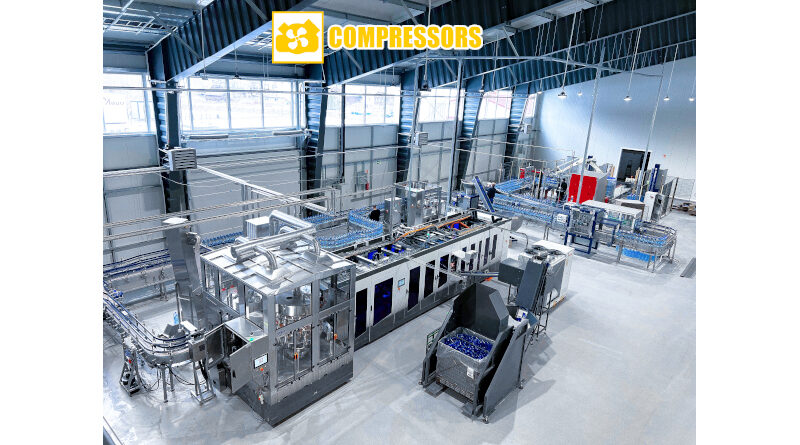Reused air
A special designed compressed air recovery system
by Dr hab. Eng. Waldemar Karaszewski, Vice President of TES STM Group
One of its regular customers approached TES STM Group to add a 5 l water bottle to their product range. The client decided to invest in a complete filling line based on the Synchroblock producing 4,000 bph at 5 l, together with the signature Eco Power Air Recovery System designed particularly for this project. TES STM Group has become the first company in Central-Eastern Europe to produce an all-in-one Synchroblock, a blow moulding-filling-capping machine.
Many people still look at how much electric energy does a blow moulding machine use to produce a PET bottle, forgetting that it’s much smaller amount in comparison to how much energy is needed to compress the air required for the blow moulding process. In the production of PET packaging, one of the main elements related to the cost of producing PET bottles is the consumption of compressed air, which directly translates into electricity consumption. Various types of solutions are used in blow-moulding machines to recover compressed air and reuse it in the blowing process or for the pneumatic control system of the blow moulding machine. Since it is possible to recover a relatively large amount of compressed air during the blow moulding process, especially in the case of large-volume bottle production, e.g., 5 l bottles, a solution was proposed to use the recovered compressed air for other machines and equipment in the packaging line, e.g. for filling machine, labelling machine, etc.
This solution is beneficial from an energy point of view, i.e. the reuse of compressed air will result in a reduction of electricity consumption for the generation of compressed air. At the same time, the proposed solution means that the size of the compressors in the system can be reduced, resulting in lower initial investment costs.
Compressed air is supplied to the blow moulding machine to blow PET bottles at a pressure of 20 bar to 40 bar. The PET bottles are first blown with a pre-blow pressure of 4 to 9 bar, and then with air at a maximum pressure of 25 bar to 40 bar, the so-called main blowing pressure. In addition, the same compressed air is used to compensate for the blow mould, i.e. to “hold” the blow mould with a force that prevents it from opening during the blowing process. After the bottle has been formed, in the standard solution the air is removed to the environment or recovered to the control system of the same blow-moulding machine. From the blow mould compensation system, in the standard solution, air is always removed to the environment.
STM’s technological solution proposes a way of removing the air from the blow mould together with the compressed air from the blow mould compensation system in a sequential manner, so that three pressure values are ultimately achieved:
- 6 to 6.5 bar – to supply equipment in the filling line (filler, labelling machine, shrink-wrapper, palletising system, etc.) connected with the Synchroblock;
- 6 to 6.5 bar – to supply equipment in the can line (filler, shrink-wrapper, palletising and depalletising system, etc.) connected with the second line;
- 8 to 8.5 bar – to supply the in-line blow-moulding machine for the control process in the Synchroblock.
It was possible to recover so much of compressed air to supply TES STM Group’s line, but also the complete new can line for 14,000 bph at 0.5 l that is standing beside it, in the same new client’s hall. In the given client’s case, the energy used directly by a blow moulding section of a Synchroblock was not even 25% of the total energy needed for the blow moulding process. Nowadays in times of rising inflation, recession and constantly increasing prices of energy, these are reasons to be taken into account. Not needing to deliver additional compressed air with pressure 6-10.5 bar has direct advantages:
- There is no reason for buying an additional screw compressor or small 2-stage piston compressor to deliver compressed air to the in-line blow moulding machines control system (8-8.5 bar)
- There is no need to reduce the compressed air of high pressure (20-40 bar) to the in-line blow moulding machines control system (8-8.5 bar)
- Buying an additional screw compressor for the can line is not necessary.
An additional advantage of this solution is that the other equipment in the filling line does not need to be supplied with compressed air at a pressure of 6-6.5 bar. This specially designed compressed air recovery system is a high added value to the project of complete filling line. This was also the reason why the client received substantial EU funding for this project that significantly reduced the amount of investment needed. Moreover, this system is 100% compatible with most of the systems of compressor manufacturers’ schemes to save money and being more and more environmentally friendly.

